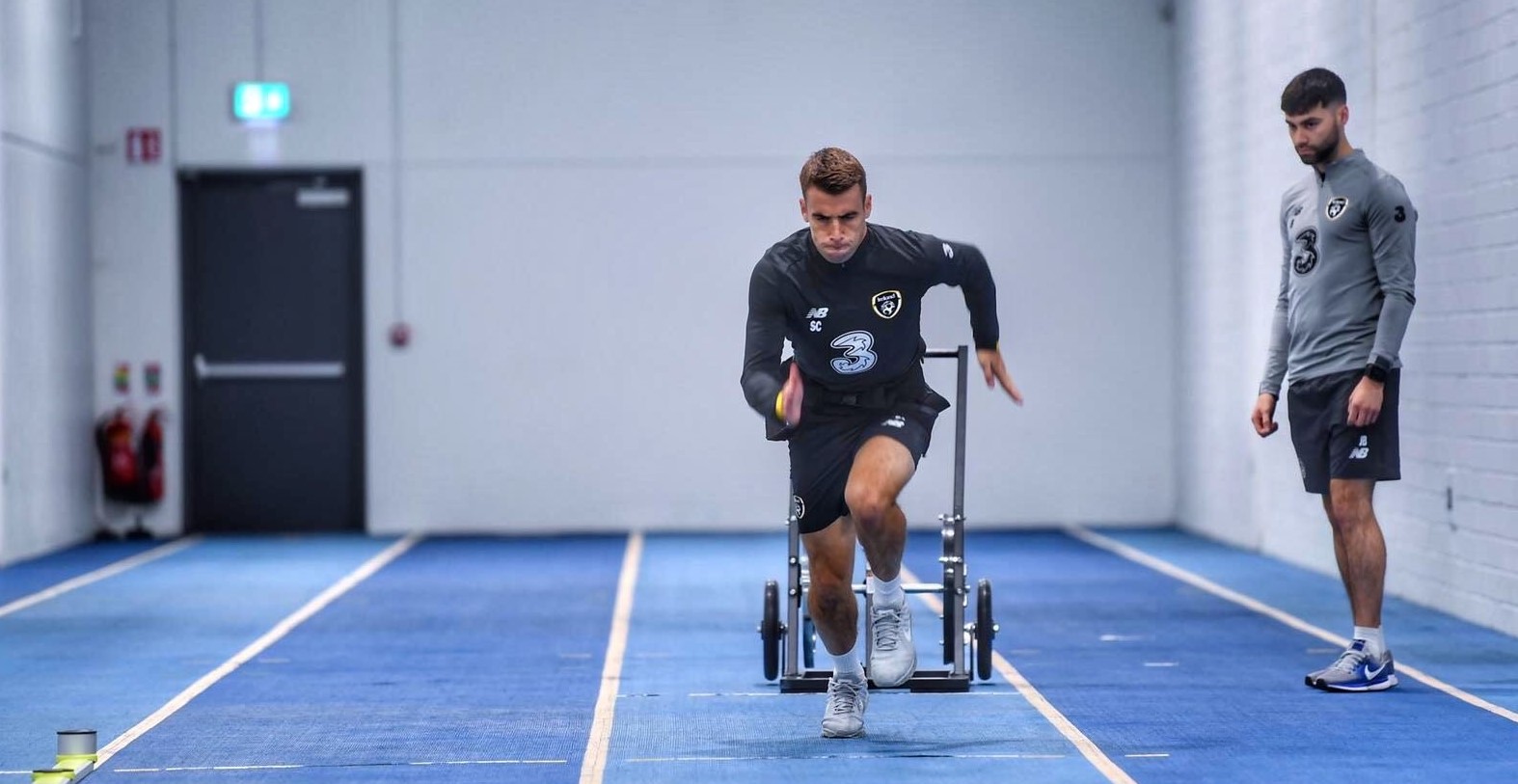
13 Aug Max Speed Training – By Ben Smalley MSc
By Ben Smalley (BSc, Msc) – DSS Sports Scientist
Sprinting 101 – “Big force, right direction, minimal time” – Mike Young
(Director of Performance and Research, Athletic Lab)
What is Speed?
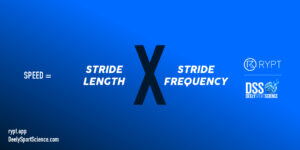
However, these aspects are not why you run fast they are outcomes of running faster. By applying greater force into the ground, in shorter time frames at ground contact – we increase stride length and increase frequency.
Sprinting is comprised of two key phases: Acceleration and Maximal Velocity.
An athletes’ ability to accelerate and reach maximal velocity is driven by the neuromuscular system and technical competency within the given task1,2. We must apply force into the ground (physical qualities) in an appropriate direction (technical competency) and do this in increasingly shorter periods of time as we progress from acceleration into top speed.
Why is Speed Important?
Speed is such a critical aspect of all field and court-based sports. The ability to cover ground quickly is critical in winning individual duels, as well as enhancing success in defensive and offensive scenarios.
Higher maximal sprinting speeds will improve an athletes’ speed reserve3 meaning the cost of moving around at an absolute submaximal speed is less taxing for faster athletes. For example, Athlete A (Maximal sprinting speed of 10m/s) only has to work at 70% of his maximal capabilities to run at 7m/s. Compared with Athlete B (Maximal sprinting speed of 8m/s) who has to run at 87.5% of his maximal capabilities when moving at 7m/s.

Figure 1. Speed Reserve Transfer Effect (Derek Hansen, 2014)
Greater maximal sprinting speeds will also benefit the athlete when repeatedly sprinting in competition. We know repeat sprint ability (RSA) is determined by an athletes’ single sprint performance and the ability to recover between these sprints4. Therefore, training these two components will be critical in optimising your athletes on field performance. Charlie Francis had a great quote referring to raising the ceiling of your athletes’ maximal output- “If you can’t touch the basketball rim once, it doesn’t matter how many times you can’t touch the basketball rim”. In a field sport scenario, the same concept applies. Just helping an athlete get better at being repeatedly slow isn’t helping anyone. Generally, a more fatigued fast athlete is still beating a less fatigued slow athlete in a foot race during competition. Overall, never stop trying to increase your athletes maximal speed outputs.

Figure 2. Factors to improve RSA (Bishop et al, 2011)
Practical Application
Cam Josse presented a fantastic webinar on developing speed in team sport in April over on the ‘Hawkins Dynamic’ YouTube page. He illustrated the breakdown of each sprinting segment and complimentary training methods to aid in its enhancement.
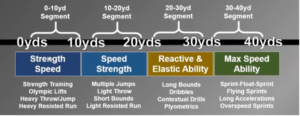
(Full credit to Cam Josse – Athletic Performance Coach at Indiana Football).
As you can see in Figure 1, as you progress through the segments of the sprint cycle the activity becomes less muscular and more elastic. Thus, the training methods to complement this should follow the same theme.
For more information on developing power and reactive strength, please see our two previous blogs available on the website.
Whilst, research supports strength and power training improving early phases of the acceleration phase, the increasing elastic environment must be taken into account and methods to enhance top speed must reflect this. A variety of training methods will aid in the development of acceleration and maximal velocity, however, the most specific and potent tool to develop these qualities is through sprinting.
There is no mechanical or neurological stimulus quite like maximal sprinting and thus it should be implemented into the training programme with appropriate progressions and volumes.
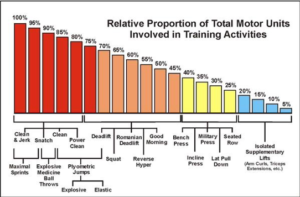
Within early general preparation you may train shorter (10m) maximal sprints or hill sprints to elicit the mechanical and neural stimulus derived from maximal sprinting without the risk of soft tissue injury. This stimulus can then be progressed incrementally into long accelerations, as well as longer and flying sprints over the course of the programme. It is vital to include pure sprinting into the training week to develop ‘speed’ but also to mitigate the risk of muscle injury5. If the only sprinting your athletes are doing is in competition on the weekend, you are doing your athletes a huge disservice.
Remember – sprinting is a medicine, therefore the dose of this activity must be taken into careful consideration when programming.
When training team sport athletes to be strong, powerful and elastic, a training menu consisting of the following methods should be included:
- Short and long sprints
- Extensive and intensive plyometrics
- A variety of unloaded, light loaded and heavily loaded ballistic training
- Strength training
References
1 Hicks, D., Schuster, J., Samozino, P. and Morin, J., 2019. Improving Mechanical Effectiveness During Sprint Acceleration. Strength and Conditioning Journal, p.1.
2 Morin, J., Edouard, P. and Samizino, P., 2011. Technical Ability of Force Application as a Determinant Factor of Sprint Performance. Medicine & Science in Sports & Exercise, 43(9), pp.1680-1688.
3 Hansen, D., 2014. The Relevance And Importance Of Speed Reserve In All Sports. [online] Strengthpowerspeed.com. Available at: <https://www.strengthpowerspeed.com/speed-reserve/> [Accessed 18 June 2020].
4 Bishop, D., Girard, O. and Mendez-Villanueva, A., 2011. Repeated-Sprint Ability – Part II. Sports Medicine, 41(9), pp.741-756.
5 Malone, S., Roe, M., Doran, D., Gabbett, T. and Collins, K., 2017. High chronic training loads and exposure to bouts of maximal velocity running reduce injury risk in elite Gaelic football. Journal of Science and Medicine in Sport, 20(3), pp.250-254.
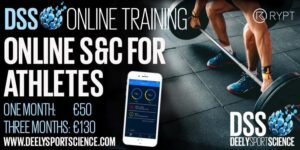
DSS Online Training
We are now currently offering online training tailored to individual needs.
We are offering varying pricing strategy which are outlined within the following link: https://elite.deelysportscience.com/dss-online-training/
This training support includes:
This support will be provided to you through the RYPT app. A fantastic resource for online training allowing top performance coaches to send programmes directly to your phone each week.
The App includes:
(To find out more visit their site at: https://www.rypt.app)
To gain access to a 2 month free trial to the RYPT app – click on the link here:
https://portal.rypt.app/signup/86ACD9F
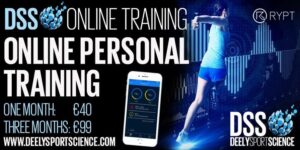

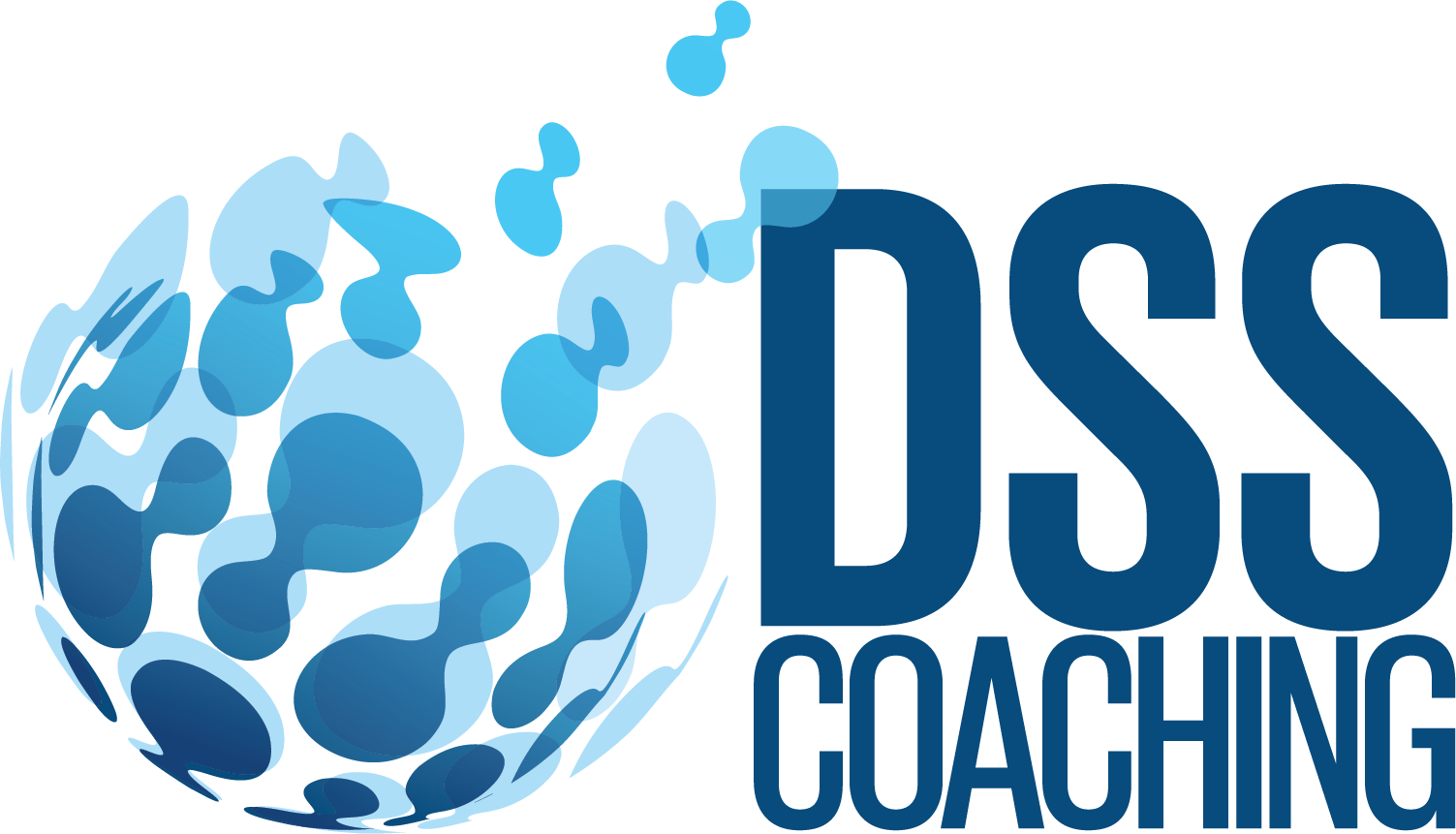

No Comments